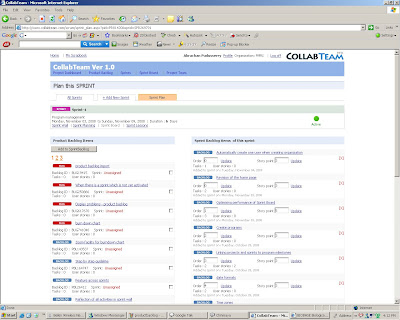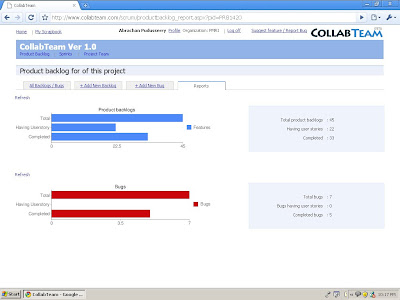
Thursday, November 20, 2008
# 9 Monitoring the product backlog entries Vs User stories

Wednesday, November 12, 2008
# 8 Program management using CollabTeam
 A program is a collection of inter related projects, when done together gives the stakeholders some added advantages, than doing them one after the other (thanks to PMBOK). Consider a situation, where multiple project teams operating from different geographies contributing to a program (or position yourself as a super product owner, who has multiple project teams contributing tp your program). CollabTeam provides you with the following features to cater to this situation in a seamless fashion.
A program is a collection of inter related projects, when done together gives the stakeholders some added advantages, than doing them one after the other (thanks to PMBOK). Consider a situation, where multiple project teams operating from different geographies contributing to a program (or position yourself as a super product owner, who has multiple project teams contributing tp your program). CollabTeam provides you with the following features to cater to this situation in a seamless fashion.- A program comprising of multiple milestones (road map) can be defined using the program option under the administrator module (log in as administrator).
- Sprints under the projects within the company can be linked to the milestones
This feature helps to integrate the outputs of multiple sprints across projects to a milestone at the program level.
# 7 Handling of defects by collabteam
Wednesday, November 5, 2008
# 6 Sprint Velocity
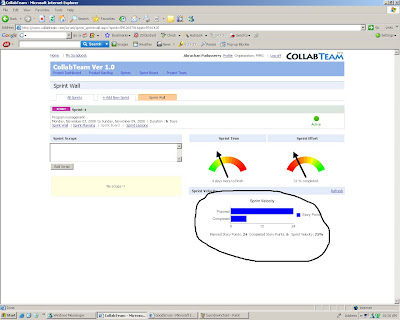 Sprint velocity calculations help the team to learn and continuously improve.
Sprint velocity calculations help the team to learn and continuously improve.Sprint velocity = (work units completed / work units committed) during the sprint * 100
During the initial sprints, it is quite likely that teams can fail becuase they either over committed work or under committed. In the former case, at the end of the sprint, the team might not have completed the work committed at the start of the sprint. In the latter case, the sprint will get over before the sprint end date. After some learning through a couple of sprints, the team will learn to complete what they committed within the stipulated time frame. At that time, the sprint velocity calculation will show 100%.
# 5 Sprint Burn down chart
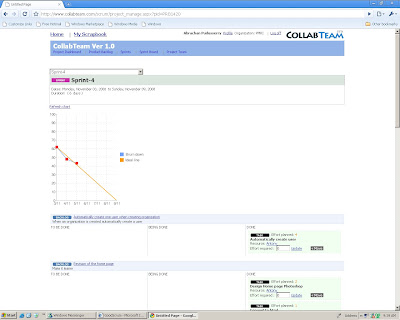
isions as the sprint progresses. The 'Y' axis shows the 'effort' required to complete the balance work in tyhe sprint and the 'x' axis, the number of days of the sprint. The objective is to make the effort required to complete the sprint zero on or before the sprint end date.
In the conventional project management, we use the earned value management. The earned value chart focuses on the work completed so far. In the case of a burn down chart, the focus is on balance effort required to complete the pending activities.
Collabteam feature
Collabteam has the sprint burn down feature. The burn down is derived from the 'balance effort' against the tasks, which the team members updates regularly.
# 4 Sprint Board
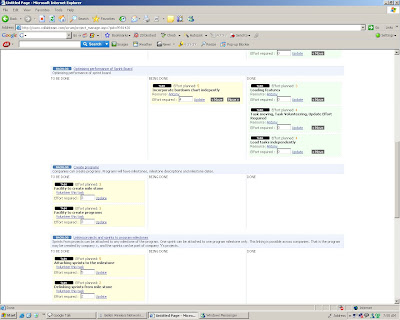
are requested to volunteer the work. Once the work gets volunteered it moves on to the 'being done' column and finally when it gets done, it moves to the 'done' column. Work volunteering is an integral part of scrum. Work volunteering brings in more ownership and pride in work.
When the tasks are progressing, the team members can update the effort required to complete the remaining part of the work on a daily basis. This helps to forecast the total effort required to complete the balance activities in the sprint
# 3 Sprint backlog
